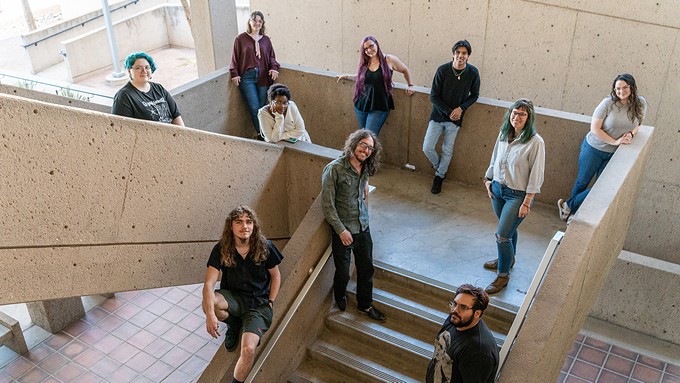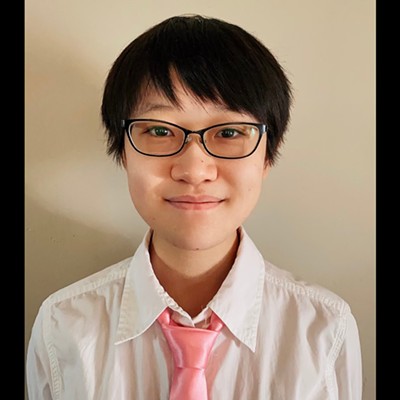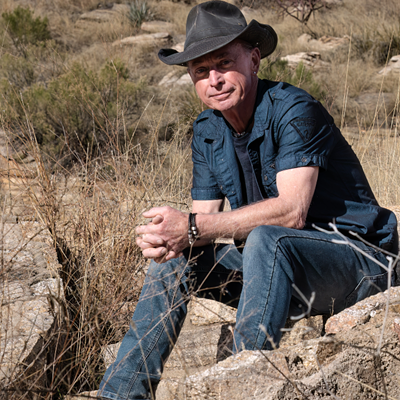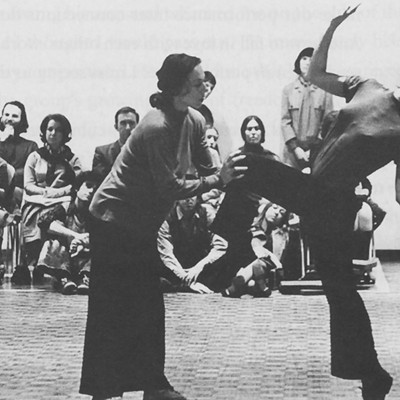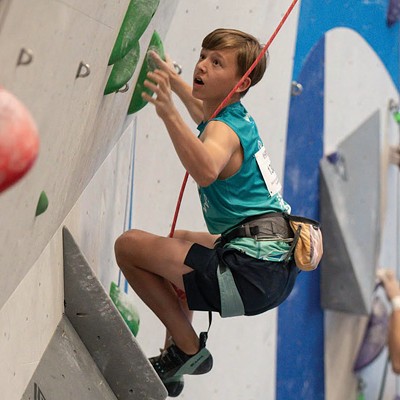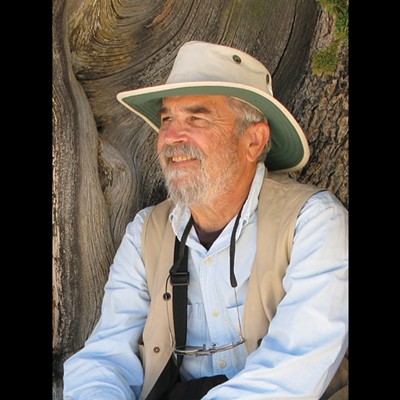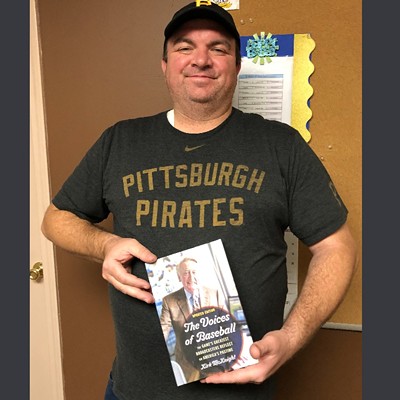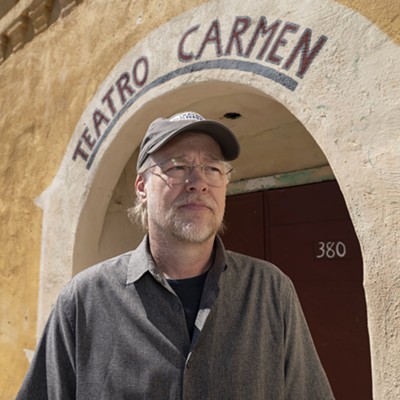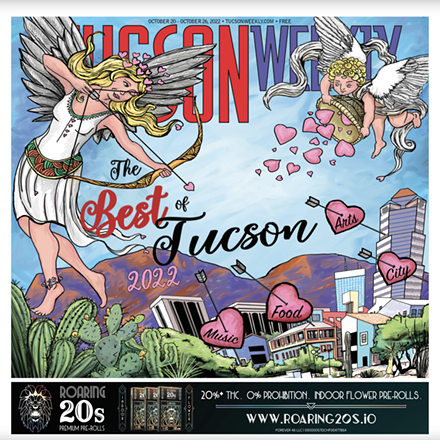Since it started 31 years ago, the Sandscript student-run literary magazine has highlighted the visual arts, prose and poetry of Pima Community College students.
The nationally recognized publication, which has won multiple awards from the Community College Humanities Association, has developed a reputation for showcasing high-quality work.
This year’s print and digital editions of Sandscript were launched during an unveiling event on May 15 at the Pima Community College West Campus’ Proscenium Theatre.
Sandscript faced tough times during the height of COVID-19, with fewer submissions, but it is coming back strong this year.
Raiden Lopez has served as editor in chief for the last three editions. She has watched the magazine survive and take on different formats.
“The process alone has just been very different, going from completely digital, and then the next year, I was able to do print and digital. And then this year, again. The shift has been so significant from the pandemic to now,” Lopez said.
For the second year, a 360 virtual gallery will highlight the work of other artists as well as some additional pieces by those featured in this year’s publication.
The museum allows for the display of visual pieces that do not translate as well to a 2-dimensional photographic display.
The literary publication is produced during the spring WRT 162 Literary Magazine Workshop, which is part of the English and creative writing major.
During the class, students become part of the editorial team, in roles such as poetry or prose editors, art directors and social media managers.
The top three winners in the visual arts, poetry and prose categories are decided by judges, who work in corresponding fields.
Submissions first go through the editorial staff, who decide who will be in the publication. They use a blind judging process.
Mariah Young, the faculty adviser for Sandscript, said that judging criteria is determined early, with the help of subject matter experts.
Young said the editorial staff is looking for written and visual arts pieces that stand out and have larger messages.
“A lot of that can be technical, but it also has to do with what we call ‘the lingering effect.’ What were the pieces that really made us linger and made us think? Also, what were the pieces that we had a lot of discussions about?” Young said. “A lot of how we are looking at these pieces are from that technical perspective but also from a sense of what does it say about our time and community as Pima students?”
Young said the students take on an active role in every step of the process.
“The magazine is really theirs. I just get to hang out with the cool kids while they are having these conversations. They set up the criteria. They vet, discuss and vote on all of the submissions, and they work in concert with the design editor to manifest the edition,” Young said.
The cover art chosen each year represents major themes within the publication.
In 2021, an image of a flower was chosen to represent the theme of hope.
Young said this year, the image is a painting of a human form covered in disparate brush strokes, which represents the dichotomy of uniformity and chaos.
For the 2023 edition, there were over 400 submissions, of which 186 were chosen from 85 student contributors in the prose, poetry and visual arts categories.
The only requirement to submit is to be an enrolled student at Pima Community College.
Lopez said for many students, getting published is Sandscript is meaningful because it is the first time having their work in print.
“It’s a very big deal. The pride is real. The fact that they can see this as their first publication and grow from there is very amazing,” Lopez said.
Contributors range from experienced writers and artists to those working on their first pieces.
Some students have had their work in Sandscript multiple times throughout their academic careers.
Contributors come from a range of different backgrounds and experiences. This year, there were several bilingual submissions.
The visual arts category is open to different types of art. In the past, artists have submitted photographs of sculptures and woodwork pieces for consideration.
Major themes in each edition vary from year to year.
Recently, individuals have been looking inward and creating works about their own personal experiences and their families.
Lopez has noticed the difference in subject matter over the last three years.
“When I started with the 2021 edition, we saw a lot of the pandemic, the tragedies. We felt that in a lot of the stories… Jump forward to 2022, in that edition, we see more coming out, branching into what life can be, normalcy after the pandemic but still having to deal with masks and everything. Then jump again to 2023, where a lot of those mandates are now gone, but we still have that lingering effect of a lot of people lost a lot of things. A lot of people are now trying to figure out what they were versus who they are now. It’s so much of a difference from 2021 to 2023 in the hope, vision and light that you see,” Lopez said.
Often, work featured in Sandscript will have life afterward.
Some prose writers have turned their short stories into novels, and visual arts pieces have later been featured in museums and galleries.
Lopez said students will give them updates on their successes.
“We get a lot of those where they are very proud and want to share that they have gone onto further things,” Lopez said.
The publication is read by Pima students and their family members and friends, but there is a wider reach in the community.
There are faculty members and staff at various Pima Community College campuses, as well as community members, who collect editions of the magazine.
“I have a colleague at my home campus of Desert Vista, she has a copy of every Sandscript for the past 15 or 16 editions…There are people in the community that have been published in it, and also their family members have been published in it, so it’s definitely got a reach that has surprised me,” Young said.

